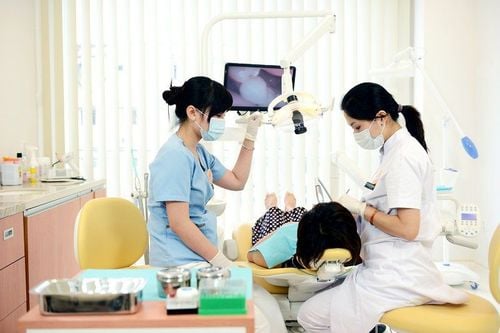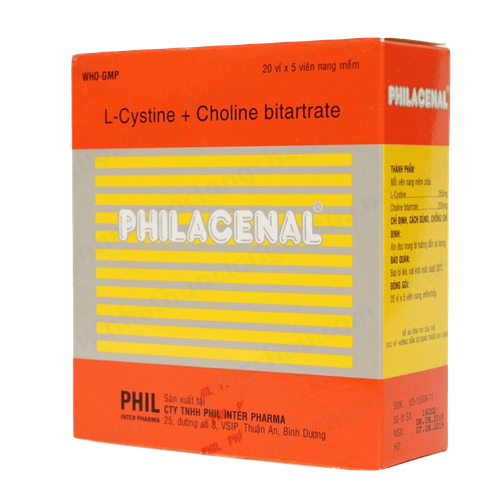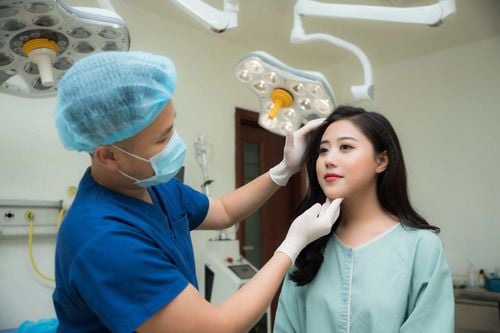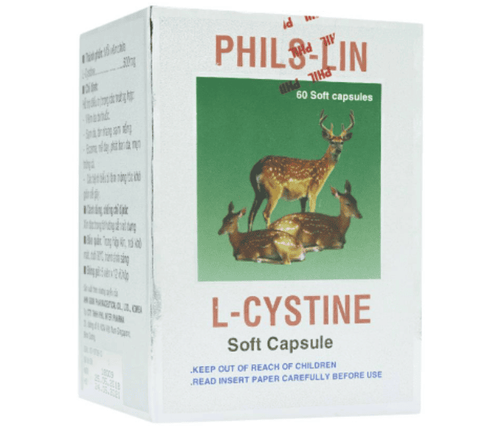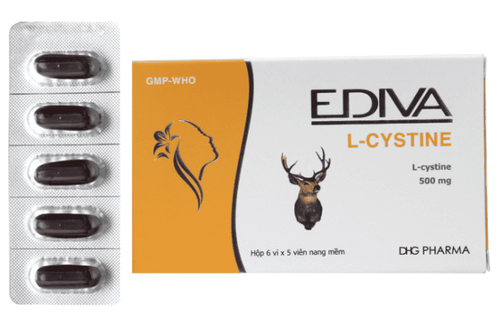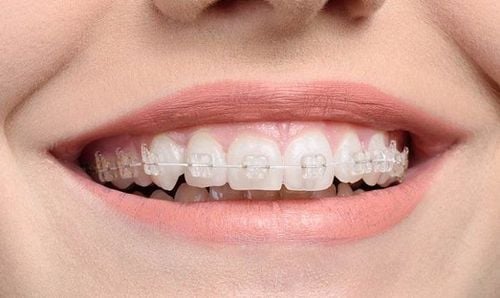This is an automatically translated article.
"Can long-term freckles be cured" is a concern of many women when hyperpigmentation affects many cosmetic problems. The answer is that the treatment of freckles and melasma often presents many challenges, in many cases inadequate response and frequent recurrence. Accordingly, combinations of therapies targeting multiple pathogens are often applied, promising the best clinical outcomes.1. Avoid the sun for the skin
Strict skin protection from sunlight is the first, simplest way that people can apply to treat freckles. This includes staying out of the sun, wearing sun-protective clothing, and using a broad-spectrum sunscreen, all of which are essential components of a home remedy for perennial freckles.For broad spectrum sunscreen use, dermatologists recommend using a broad spectrum sunscreen daily, choosing one with a sun protection factor (SPF) of 50 or higher. For sunscreen to be effective, apply an adequate amount 30 minutes before going outside and repeat every 2 hours if you are still outdoors.
2. First-line therapy
Levels of melasma, mild freckles For patients with mild melasma, freckles, 4% hydroquinone cream is first-line therapy, which can be applied once or twice daily for a period of two to six months. After this time, when the condition of melasma and freckles has improved, users can switch to the maintenance mode for six months or longer.The mechanism of action of hydroquinone is to inhibit the conversion of tyrosine to melanin through competitive inhibition of tyrosinase. Inhibition of DNA and RNA synthesis by melanocytes and increased degradation of melanosomes may also contribute to hydroquinone's mechanism of action. Many hydroquinone formulations are now available, as monotherapy or in combination with other skin lighteners or exfoliants, such as glycolic acid or tretinoin, in concentrations ranging from 2% or less, in over-the-counter formulations and up to 4% or more are available by prescription only.
Adverse effects when using hydroquinone should be noted that skin pigmentation will return to normal when stopping use. In addition, acute complications following the use of hydroquinone include irritation, allergic contact dermatitis, post-inflammatory hyperpigmentation, and hypopigmentation. Some patients may experience erythema and peeling of the skin after using hydroquinone. At the same time, hydroquinone is contraindicated in pregnant and lactating women as well as in patients with known allergies. In addition, non-hydroquinone skin lighteners, such as azelaic acid, kojic acid, or niacinamide, alone or in combination, can be used as alternative first-line therapies, particularly in those Patients intolerant or allergic to hydroquinone:
Azelaic acid: inhibits tyrosinase and has shown antiproliferative and cytotoxic effects on several tumor cell lines in vitro. In trials, 20% azelaic acid cream was shown to be as effective as 4% hydroquinone cream.
Kojic acid: derived from a species of Aspergillus and Penicillium, inhibits tyrosinase by chelation of copper at the enzyme's active site. Although monotherapy appears to be less effective than hydroquinone, patients who are intolerant to hydroquinone should consider kojic acid.
Niacinamide: is the physiologically active form of niacin or vitamin B3. Niacinamide prevents the transfer of melanosomes from melanocytes to keratinocytes. Furthermore, this ingredient has anti-inflammatory effects and increases the biosynthesis of ceramides, as well as other stratum corneum lipids with enhanced epidermal permeability barrier function.
Moderate to severe degree of melasma, freckles For these patients, a triple combination cream of hydroquinone, tretinoin and corticosteroids that are likely to work synergistically to produce clinical benefits should be preferred over cream. hydroquinone 4% as initial treatment. The use of the combination cream should be continued nightly for two to four months.
● Topical retinoids (including tretinoin, adapalene and tazarotene) improve melasma by promoting keratinocyte turnover.
● Topical corticosteroids can directly inhibit melanogenesis by reducing the production of inflammatory mediators, such as prostaglandins and leukotrienes.

Bị nám tàn nhang lâu năm có chữa được không là thắc mắc của nhiều chị em
3. Second row therapy
Chemical peels and oral tranexamic acid are second-line therapy for patients with melasma who have not responded to the above-mentioned topical therapies.Superficial chemical peels: commonly used to treat melasma include glycolic acid, other alpha-hydroxy acids, salicylic acid, Jessner peel, and trichloroacetic acid. Five to six chemical peels at two to four week intervals should be performed as an adjunct to hydroquinone or non-hydroquinone brighteners. Possible side effects of chemical peels include infection, scarring (although this is rare with superficial peels), allergic reactions, milia, acne breakouts, erythema Persistent and changing skin pigmentation. Oral tranexamic acid: is a hemostatic agent, a synthetic lysine derivative that inhibits plasminogen binding to its receptors expressed by keratinocytes. This reduces UV-induced plasmin activity on the skin. The effectiveness of tranexamic acid when used for the treatment of melasma is 500 mg per day, divided into two doses. However, the risk of recurrent hyperpigmentation always occurs when treatment is stopped. Side effects due to the drug are bloating, headache, ringing in the ears, menstrual irregularities and, in rare cases, deep vein thrombosis.
4. Third row therapy
Laser and light therapy is a third-line treatment for melasma, suitable for patients who have not responded adequately to topical therapy and chemical peels. It is important that lasers and light sources be used with extreme care and caution in people with dark skin due to the risk of postinflammatory hyperpigmentation.Worsening of mottled hyperpigmentation or hypopigmentation may result from laser treatment. At the same time, it is necessary to coordinate with sun protection measures to avoid hyperpigmentation reflection. Furthermore, patients should also be advised that lasers and light therapy are not definitive treatments for melasma. At the same time, recurrence may be associated with darker pigmentation, which may not accommodate subsequent treatment. Therefore, clinicians should advise patients on the importance of adherence to a maintenance regimen to minimize the risk of recurrence following treatment with this modality.

Trị tàn nhang lâu năm thường tốn nhiều thời gian và công sức
5. Maintenance treatment and relapse prevention
Routine approaches to preventing recurrence include active use of broad-spectrum sunscreens and non-hydroquinone skin lighteners.Alternatively, users can intermittently use 4% hydroquinone cream or triple cream twice weekly in a maintenance regimen to achieve pigment clearance.
In summary, curable long-term melasma and freckles often face many difficulties, in many cases the response is incomplete and often recurs. Therefore, freckle treatment should be based on basic patient education about avoiding the triggers and risk factors for melasma. In particular, the importance of strict sun protection during and after treatment is the key to successful melasma control in the home remedies for perennial freckles. The application of other measures should be prescribed by a doctor, in order to both optimize the effect achieved and ensure safety for health.
Dermatology - Vinmec International General Hospital currently has a team of highly skilled doctors and cosmetologists with many years of experience. The hospital is also equipped with standard machinery and advanced technology to make the examination and treatment of skin problems more effective and optimized for customers.
Please dial HOTLINE for more information or register for an appointment HERE. Download MyVinmec app to make appointments faster and to manage your bookings easily.




